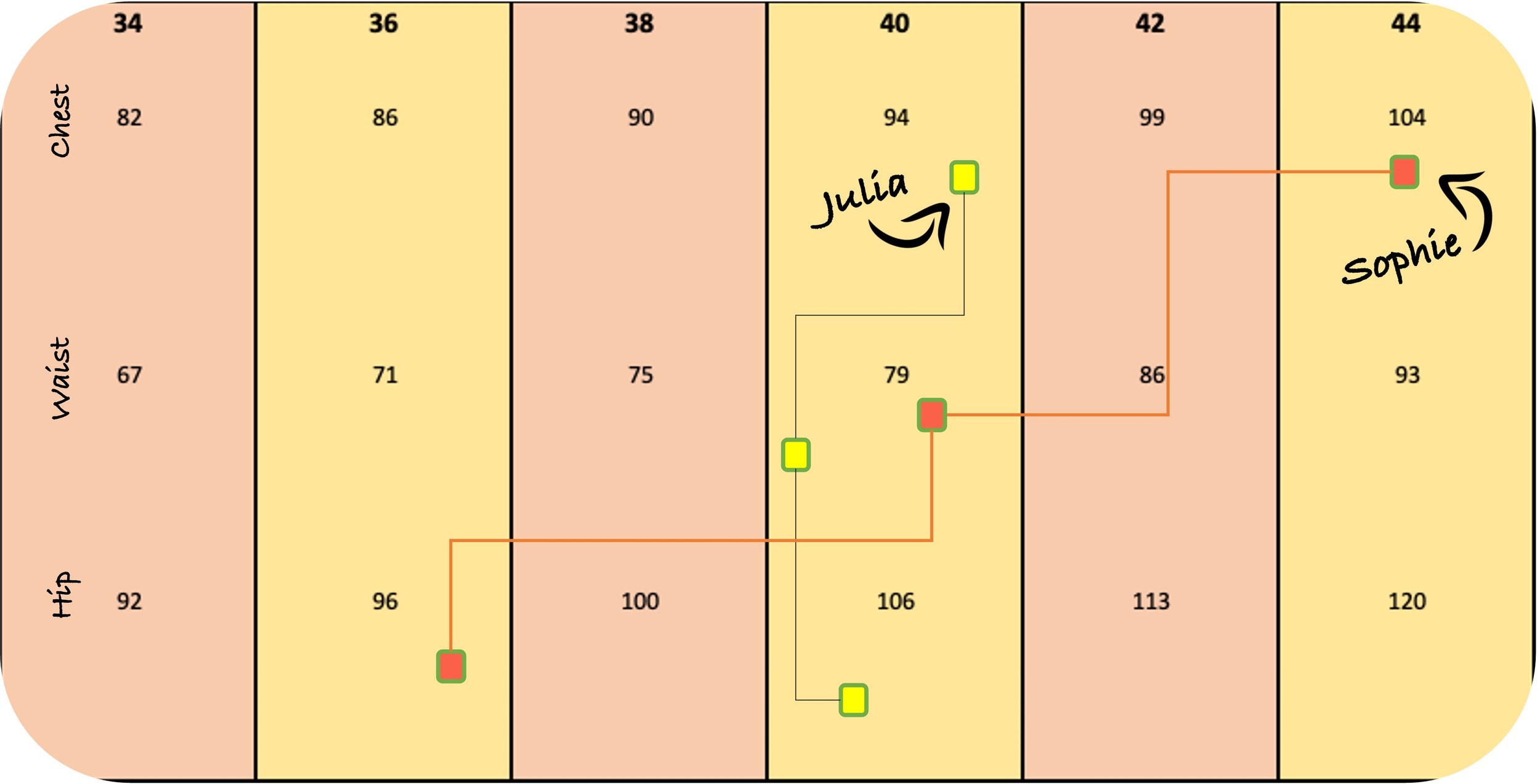The Complex Case Called Sizing
Why is finding the right size sometimes such a hard thing to do? Many consumers tend to think they know their perfect size upfront – ‘as it’s always the same’ - , but the reality turns out to be different many times. And there’s a good reason for it – sizing and fitting is a complex case, that is driven by 3 principle areas of variation: body dimensions, clothing specifications and human preferences.
Let’s start with variations in body dimensions. In literature you’ll find typical classifications of body types, such as triangle shape, inverted triangle, rectangle, oval or hour glass body shape, primarily used for females. For male you’ll find classifications such as ectomorph, mesomorph or endomorph. These very valuable classifications already indicate that there is a very broad range of different body types. Yet the reality is that – when you relate it to different clothing sizes – the range of different body shapes & dimensions is so many times bigger. The variation in combinations of length, chest, waist, hip and others is probably even infinite. On top, body dimensions evolve over time.
So when you then consider a fashion brand’s size chart (with typically chest, waist and hip body dimensions specified), you’ll find there are only a limited number of people that nicely fit within 1 size for all specified body dimensions. Take the example below. What you see is 2 people visually represented on the size chart of a Belgian fashion brand. The yellow dots represent Julia, who fits nicely in 1 size (being 40) for chest, waist and hip. The orange dots represent Sophie, who covers a range of 5 sizes: 44 for chest, a 40 for waist and a 36 for hip. So most likely a triangular body shape, but finding the right size is probably a challenging thing to do for Sophie!
By consequence, if you want to advise Sophie on the right size for a clothing item, you’ll need detailed body shape data to recommend the best for her. And face reality: there are many Sophie type of body shapes and variations in this world!
Variations in clothing
Area of variation number 2: clothing specifications. Technical dimensions of an item vary supplier by supplier. On top, many brands agree with their manufacturers upon so called production tolerances, that can go up to 2 cm. If you know that an average difference between 2 sizes is 4 cm, these tolerances can have a big impact on the fit. Lastly, the type of fabric of an item also heavily determines the fit. Very stretchy fabrics obviously have a different fit than fabrics that don’t contain any elastane. So getting the sizing right is not just a matter of checking the brand’s overall sizing chart, for some items you simply need to go to the detail of specs and fit to get things right.
Lastly… user preferences
Thirdly there’s the element of human preferences – most probably the toughest dimension to deal with. What person A considers as a tight fit, might mean something completely different for person B. Not to mention the psychological effect of sizing – some people simple squeeze themselves into that 36 as they’re not ready to accept that in the meantime the 38 is the better size for them.
These 3 dimensions make up the complex case called sizing. It shows that it’s not just a theoretical calculation. It shows that you can’t compare the right size for one person with the right one for another. It shows you need detailed data to generate meaningful size recommendations. And above all, it shows that a great size recommendation tool in the first place should be a decision-supportive tool: helping the consumer to evaluate the fit of an item in relation to his or her own body shape. As it will always be up to the consumer to take the final decision on what size will bring the best fit.
And that’s what entails Shavatar’s core mission. We don’t claim to recommend that one and only perfect size for every item for every consumer. We focus on visualizing the fit of a clothing item in the best possible way, so that the consumer has everything in hands to make the best possible choice on the right size.
